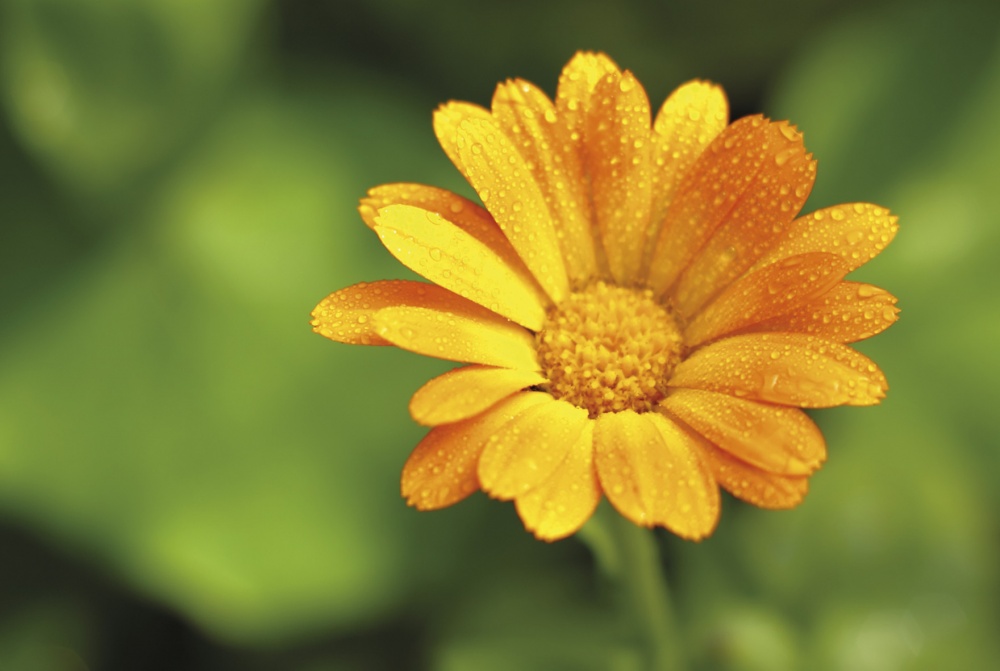Stillingfleet

Vanessa Cook of Stillingfleet Gardens and Nurseries gets ready for the growing season, and gives some advice on planting
The café is painted a soft blue green colour and so I tend to grow pinks, blues, greys and green flowers rather than hot orange or red. My first attempt was to sow direct into the soil but I found they germinated unevenly and the result was poor. The last couple of years I have sown into plugs or small pots and planted them out when they are a reasonable size. This way you can plan your planting in rows so they are easy to pick or just plant randomly so you have a patch of colourful mixed annuals.
One of the annuals I would not be without is Nigella damascena (Love-in-a-mist). There is a very pretty white form called ‘African Bride’, but I grow ‘Midnight Blue’ which is very dark blue and also ‘Mulberry Rose’, a pale pink deepening to rosy pink as the flowers age. They also have seed heads which dry and are very useful in flower arrangements as well as prolonging the length of interest in the garden.
I always think of Delphiniums as plants I cannot grow – either the slugs devour them early in the year or the wind demolishes them later on. But Delphinium consolida (Larkspur) is an annual and very easy to grow. I grow Delphinium consolida ‘Misty Lavender’ which is about 90 cm tall and has spikes of delicious pale grey/lavender flowers. It grew well for me last year, flowered until the first frosts and looked good in the garden, and when it was picked lasted well in the vases.
When I was a child my mother always grew Reseda odorata (Mignonette) and last year, at last, I got round to buying some seed. It was introduced in the 17th century and because it has rather insignificant pale green and brownish flowers it has disappeared from most gardens. It was a joy – growing in the vegetable garden it scented the whole area, did not need dead heading and flowered for months. Try a small patch somewhere and you will not regret it.
Also in the vegetable garden and to pick for the house rather than the café, I grow Calendula (pot marigold) ‘Art Shades’. They vary in colour from the palest cream to deep orange and all colours in between. They flower all summer and attract aphids away from your cabbages – I gather you can also use the flowers in salads but I have not tried that yet. Also in amongst the vegetables I grow Tropaeolum majus (Nasturtium) Milkmaid, this has masses of creamy white flowers and I train it up a willow obelisk – under the blueberries I plant a dwarf form with dark foliage and scarlet flowers. The cabbage white butterflies usually end up here rather than on the brassicas and I spend evenings picking off the caterpillars – the joy of being organic! This year I have invested in a vegetable cage, tall enough for me to get under without having to crawl and over this will be hung nets to keep the cabbage white butterflies away.
Two more annuals that are going into my small picking area are Centaurea cyanus (Cornflower) ‘Frosty Mixed’ and Consolida regalis (Larkspur) ‘Blue Cloud’. This cornflower has flowers in shades of red, blue, maroon and pink and the edges of the petals are tipped with white, it is a foolproof cottage delight. The larkspur is another old fashioned plant but this is an especially elegant form, having airy sprays of small starry blue flowers that look wonderful in small arrangements. It is good to remember if you want to encourage more bumblebees and butterflies to inhabit your garden you should concentrate on growing single flowerers rather than double varieties. I shall be checking the plot to see which flowers are the most attractive to wildlife and will report my results.
I am trying an annual grass to pick this year, Panicum violaceum also known as Violet Panic Grass. It has purplish pendulous seed heads, ideal for flower arrangements, and it is a form of millet so any seed left at the end of the year will be enjoyed by the birds. We grow several perennial grasses here and I think customers are put off growing more grasses because of the difficulty of caring for them.
Miscanthus are some of the easiest and although we tend to think of them as being 150cm tall there are several that are much shorter, we even grow Miscanthus in a tub. One of the best tall varieties is Miscanthus
malepartus – silver veined foliage and flower heads of the darkest purplish red which fade to silver over the winter. The only care they need is cutting down to the ground in February. Other good grasses to grow in tubs are Hakonechloa macra ‘Aureola’, golden variegated evergreen foliage which will grow in sun or shade and is only 30cm tall.
For a grey grass Festuca glauca ‘Elijah Blue’ is excellent, making clumps of spiky foliage throughout the year. This does need to be grown in the sun and in well-drained conditions. Neither of these grasses seed around or are a nuisance in any way, so do try a grass or two this year – they add shape and texture to the garden and because they are evergreen give protection to insects during the winter.
I found a clump of hibernating ladybirds in one of our Miscanthus which was a bonus when I think of the good work they will do to my aphids in the coming year. For anyone wanting more information on growing annual flowers can I recommend The Cut Flower Patch by Louise Curley, a sensible and down to earth guide.
Stillingfleet Lodge Gardens, York www.stillingfleetlodgenurseries.co.uk





